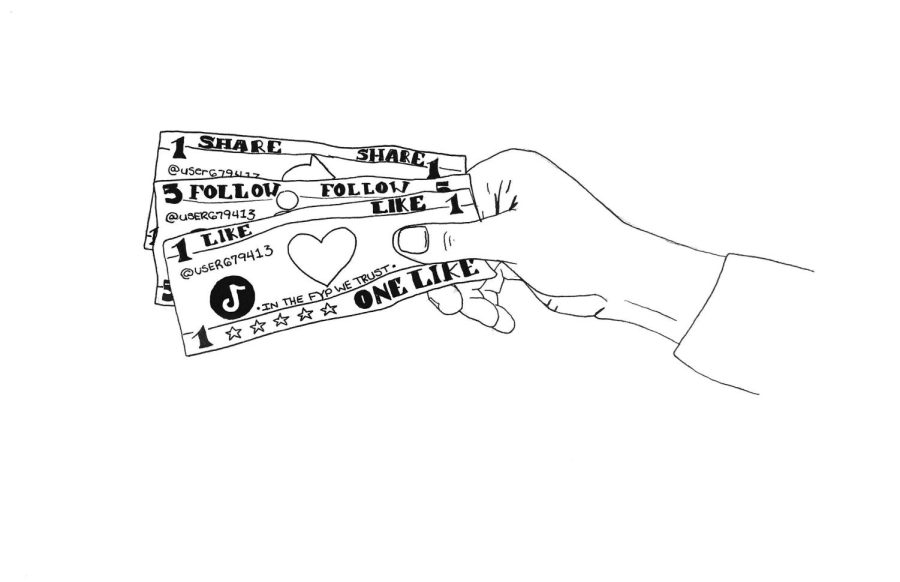Opinion | The creator economy can hurt users
April 12, 2022
As spring break Instagram posts rolled out, images of my classmates in picture-perfect tropical scenes bombarded me while I returned to the bleak surroundings of central Pennsylvania.
As the week continued, I found myself checking Instagram every 15 minutes, growing more and more bitter. I was filled with an urge to post something, anything, to indicate that I was also having fun — which I wasn’t. I wanted to produce a false image of myself to my classmates and followers. I wanted to create a product.
Social media began as a place to connect digitally with people from all walks of life. The focus was community. As children, we bought into this. I remember days spent Snapchatting friends and sharing videos on Instagram, but felt a shift as I got older.
Social media no longer feels like a community, but instead like a platform for me to sell a filtered version of myself. Somehow it has become the new norm to view social media like a market — one where we are the products being sold.
This change is largely due to influencers — people with a strong online presence that persuade their targeted audience to buy promoted products. As they reign in more and more followers, their posts carry a greater impact and sales spike. This new mode of advertising is known as “influencer marketing.”
The genius of this kind of advertisement is that it allows consumers to think they’re in control. Social media has become the hub for our lives. We see ourselves in control of what we interact with and, more importantly, what we don’t. This creates an issue for brands, as they can’t reach consumers as easily. Influencer marketing is changing all of this.
People listen to their favorite YouTube star, Instagrammer or TikTok personality when they suggest buying a product. One study found that 49% of consumers rely on influencer recommendations.
Major brands now commit a portion of their budgets to this new marketing, and some brands are beginning to funnel money into what is called the “creator economy.” On social media, the term “influencer” has been replaced with “creator” to conjure what Kyle Chayka of the New Yorker calls, “an internet in which we are all artisanal blacksmiths plying our digital craft.” The internet has turned into a tool for each of us to shape our own brand.
Influencers make a living by posting photos of their daily lives and tagging a name brand in the corner. Some influencers can bring in $250,000 with a single post. But where does this leave the rest of us, the ones who don’t make a living through a few photo dumps? It forces us to navigate social media platforms that have turned into economies.
Influencers rely on likes, followers and shares to track engagement and collect earnings. These metrics have become what’s known as “social currency” — how consumers measure the credibility of influencers’ brands. But these are the same metrics that ordinary people use to reinforce their own social standing and self worth.
Instagram and other social media apps use likes and shares to create their own reward systems. In fact, these platforms activate the same part of the brain that gets fired up when people treat themselves to an extra dessert or make a few extra dollars gambling. When users receive a like or share, their brains light up. The like button has transitioned into a source of validation.
But as social media has become a center for performance, the stress of always having to perform has caught up with users. Teenagers who spend less time on social media reported less feelings of depression and anxiety. With the addition of influencers, users aren’t comparing themselves to a friend with four more likes, they’re comparing themselves to somebody with millions more. Studies have also shown that increased social media use can lead to a multitude of issues such as depression, anxiety and abnormal sleep patterns.
All of these factors have led to an increased wave of ordinary social media users mimicking influencers. I’ve watched friends and peers tag brands in their Instagram pictures in order to create the same viral phenomenon that influencers are known for. In order to achieve the glow of a well-received Instagram post, users amp up their feed.
But as people copy influencers, they forget that influencers’ feeds aren’t their real lives — they’re products. Influencers capitalize off of their self-image. As more and more people mimic influencer trends and techniques, they move away from their own reality. What may have begun as an attempt to get more activity on their page, becomes a persona they have to keep up with. Influencer culture isn’t restrained to influencers anymore — it’s become a core of our society and it has made all of us view our own lives through the lens of social media currency.
Ebonee Rice-Nguyen writes primarily about political, social and cultural issues. Write to her at [email protected].



